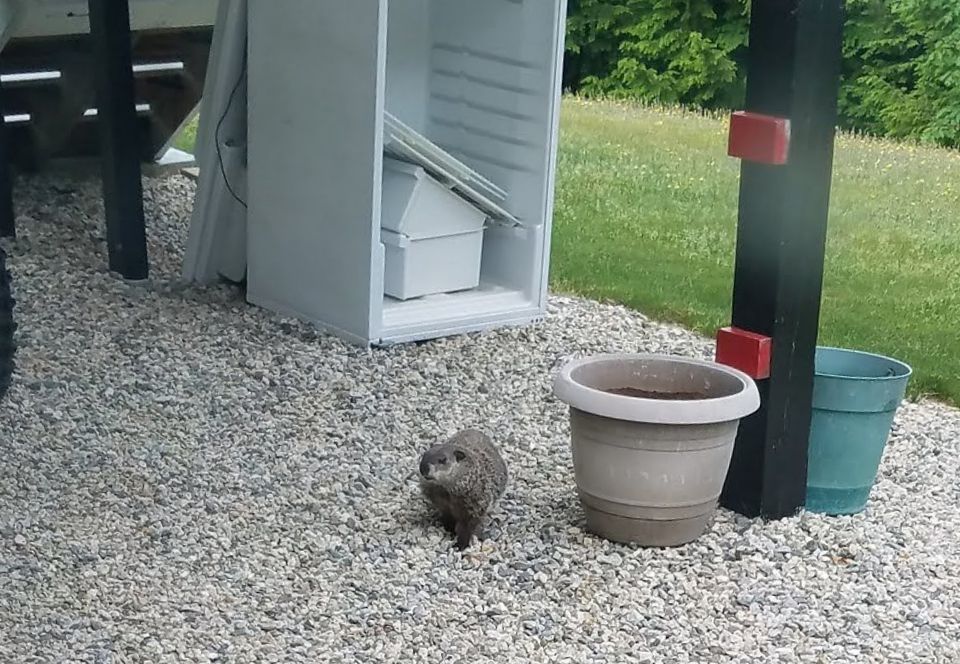 The frustrations and stress that come with tackling groundhog-related problems are quite daunting. These large-sized rodents are expert diggers, and there are many unwanted consequences because of their constant digging activities.
Groundhogs will destroy your garden, yard, foundation, and even the overall structure of your home faster than you can ever imagine. These rodents attack gardens by digging up and eating plant leaves, fruits, and roots. They dig up so many deep holes that, at the end of the day, your garden soil is too loose to sustain plant life.
Groundhogs will also dig around your yard and under your building resulting in a faulty foundation that can bring down your entire house. Humans and animals alike can break one of their limbs when they unconsciously step into a groundhog burrow. You can also get your car stuck if one of the wheels enters a groundhog burrow.
With all of their destructive tendencies taken into consideration, killing any groundhog on sight is not the best option to take. As damaging as they are, these creatures still belong to the ecosystem, and you do not want to interfere with nature. There are different ways to safely get rid of groundhogs invading your property without killing them. The easiest way to get rid of groundhogs is to use groundhog repellents.
This article will be looking at different groundhog repellents and how effective they are when used.
The frustrations and stress that come with tackling groundhog-related problems are quite daunting. These large-sized rodents are expert diggers, and there are many unwanted consequences because of their constant digging activities.
Groundhogs will destroy your garden, yard, foundation, and even the overall structure of your home faster than you can ever imagine. These rodents attack gardens by digging up and eating plant leaves, fruits, and roots. They dig up so many deep holes that, at the end of the day, your garden soil is too loose to sustain plant life.
Groundhogs will also dig around your yard and under your building resulting in a faulty foundation that can bring down your entire house. Humans and animals alike can break one of their limbs when they unconsciously step into a groundhog burrow. You can also get your car stuck if one of the wheels enters a groundhog burrow.
With all of their destructive tendencies taken into consideration, killing any groundhog on sight is not the best option to take. As damaging as they are, these creatures still belong to the ecosystem, and you do not want to interfere with nature. There are different ways to safely get rid of groundhogs invading your property without killing them. The easiest way to get rid of groundhogs is to use groundhog repellents.
This article will be looking at different groundhog repellents and how effective they are when used.
What Are Groundhog Repellents?
Groundhog repellents are products or substances, natural or artificial, that repel groundhogs on the basis that they come into direct contact with the substance. There are different categories of groundhog repellents, and they are:
- Natural Repellents
- Chemical Repellents
- Ultrasonic Repellents
- Household Products
Do Mothballs and Other Products Work?
Mothballs are one of the most commonly used repellents. It is something most homeowners have lying around their homes. Although mothballs do repel groundhogs to some extent, they are not strong enough to hold off the groundhogs for a long time. In fact, the mothball effect fades away after a while, leaving the groundhogs free to come back. Groundhogs are natural-born fighters, and their fight or flight instinct is well developed. Coupled with the fact that they prefer staying in the same location for a long time, the repellent you decide to use must be strong enough to make them flee. Groundhogs will fight the effects of any repellent when the benefits of remaining in one spot outweigh the discomfort the repellent poses. When it comes to dealing with groundhogs, you should exhaust all possible means. If you are not keen on using traps, then you should purchase strong repellents. If there is no reduction in the number of groundhogs residing on your property after using groundhog repellents, you should call a wildlife control company. Wildlife control companies have well-trained staff as well as the required equipment needed to handle the situation. These people employ different methods for controlling wildlife animals. They will show you how to use the groundhog repellents firsthand and take extra steps to ensure that you do not suffer from groundhog related issues.
Go back to the groundhogtrapping.com home page.